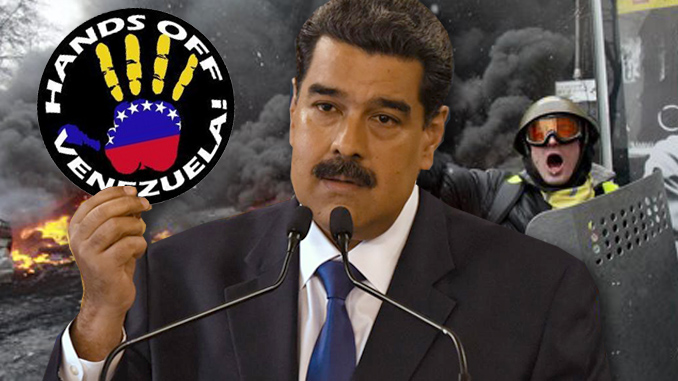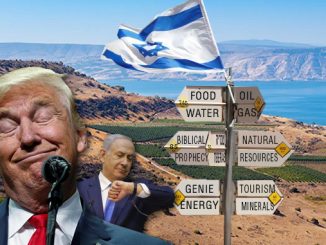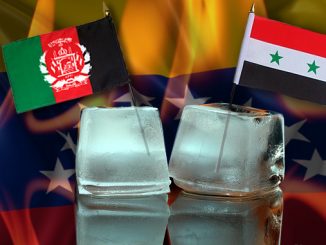
Washington neocons are in favor of direct U.S. military involvement in bringing about regime change in Venezuela, and President Trump has offered support to opposition leader Juan Guaido who is seeking to replace the nation’s elected sitting President Nicolas Maduro. It seems no one is considering the long and sordid history of U.S. intervention in Latin America, with its disastrous consequences.
By Richard Walker
United States intervention in Latin America has proved disastrous for over a century, making the prospect of taking sides in the developing crisis in Venezuela a very risky prospect. On Jan. 23, President Donald Trump signaled he was in favor of regime change in Venezuela by offering his backing to opposition leader Juan Guaido, who had just declared himself interim president. Guaido made the move despite the fact that sitting President Nicolas Maduro had no plans to step down. While Canada and some Western powers supported Trump’s decision, Russia, China, Turkey, and Italy condemned it. Some observers warned that it might open a path to the Cold War politics that dominated Latin America for decades.
Those with cool heads believe this political conflict has the potential to descend into a civil war that could see the types of forced migration reminiscent of what happened in Iraq and Syria. It could have a devastating impact on neighboring countries and ultimately on the United States. Venezuela is much larger than Iraq with roughly the same size of population, and any U.S. military force tasked with regime change would have to number close to 80,000 to 100,000.
Washington neocons are in favor of direct U.S. military involvement, but by any standard they are blind to the sordid history of American interventionist politics in the southern hemisphere. The media, for its part, has generally tended to overstate Guaido’s power and support, given that Maduro retains the backing of the country’s military and at least half the population. It is also a fact that Chavistas, as Maduro supporters are known—taking their name from the nation’s late president, Hugo Chavez—are well armed and would pose a serious threat to an invading force should Trump commit troops to Venezuela to overthrow Maduro. There is a real possibility such a strategy would erupt into extreme violence and a full-blown civil war. The U.S. would have to go it alone, because neighboring countries are opposed to military intervention, and there is no consensus within the UN Security Council for such a strategy.
Those contemplating U.S. military intervention would be well advised to read the history books. A century after Christopher Columbus landed in the New World, the big European colonial powers, especially the Spanish and the Portuguese, began a conquest in search of riches that led to the destruction of the two great civilizations of the Americas, the Incas and the Aztecs. The British and the French followed, and they all plundered the continent. European influence began to wane quickly after 1823 when President James Monroe issued the Monroe Doctrine, ordering Europeans to end their colonial projects. In other words, he told them to go home. In 1904, President Theodore Roosevelt issued his “Corollary” declaration, ceding to Washington the right to interfere when it chose in the Americas. It subsequently became the basis for the last 100 years of Washington’s regime-change policies in Latin America, some of them overt and others covert.
An example of how 20th-century Washington power players viewed the southern hemisphere is this statement by Robert Olds, undersecretary of state in 1929: “There is no room for any outside influence other than ours. … Central America has always understood that governments we support stay in power, while those we do not recognize and support fall. … It is difficult to see how we can afford to be defeated.”
A year after Olds made his comments, Raphael Trujillo, an officer trained by the U.S. military, became dictator of the Dominican Republic with Washington’s approval.

According to American historian John Coatsworth, U.S. intervention in Latin America has been unrelenting since 1899 with 41 successful regime-change interventions, which he says is essentially one every 28 months. He makes the following observations: “Direct intervention occurred in 17 of the 41 cases. These incidents involved the use of U.S. military forces, intelligence agents or local citizens employed by U.S. government agencies. In another 24 cases, the U.S. government played an indirect role. That is, local actors played the principal roles, but either would not have acted or would not have succeeded without encouragement from the U.S. government.”
Venezuela is one of the countries that has seen a lot of U.S. indirect interference through the CIA’s use of cut-out organizations and the financing of elements within protest movements.
Trump may yet discard advice from neocons that have long held the position that intervention in the Americas is good for U.S. security. This is not the Cold War, and communism no longer dominates the region. U.S. military intervention could, however, change all that. It is also worth noting that vested U.S. corporate interests have always argued that Washington ought to return control of Venezuela’s oil riches to them. Energy is never far from the surface of Washington’s Latin American policymaking.
A unique statistic, rarely mentioned, is that intervention in the Americas has always accelerated mass migration toward the U.S. border. Estimates put the Hispanic population in the U.S. at 150 million within three decades.
Richard Walker is the pen name of a former N.Y. news producer.



